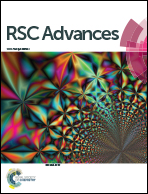Ultra-large-scale production of ultrasmall superparamagnetic iron oxide nanoparticles for T1-weighted MRI†
Abstract
Ultrasmall superparamagnetic iron oxide (USPIO) nanoparticles with high stability in physiological conditions have great potential for T1-weighted MRI. In the current study, we developed a procedure for ultra-large-scale production of USPIOs (1.5 kg per batch) for T1-weighted MRI. The USPIOs were coated with poly(acrylic acid) (PAA@USPIOs). They were uniform in size (∼4.5 nm) and very stable in physiological conditions even after being sterilized in an autoclave. Due to their small size, the PAA@USPIOs demonstrated good T1 MRI contrast effect and could be used for both first-pass and steady-state magnetic resonance angiography (MRA). After being injected with PAA@USPIOs at the dose of 135 μmol Fe per kg, the head–neck vasculatures and abdominal artery of rabbits and the coronary artery of pigs could be clearly visualized by T1-weighted MRI. Moreover, PAA@USPIOs were highly tolerable by animals. Our study indicated that the procedure developed in this study has great promise for large-scale production of USPIOs for T1-weighted MRI for future clinical applications.


 Please wait while we load your content...
Please wait while we load your content...